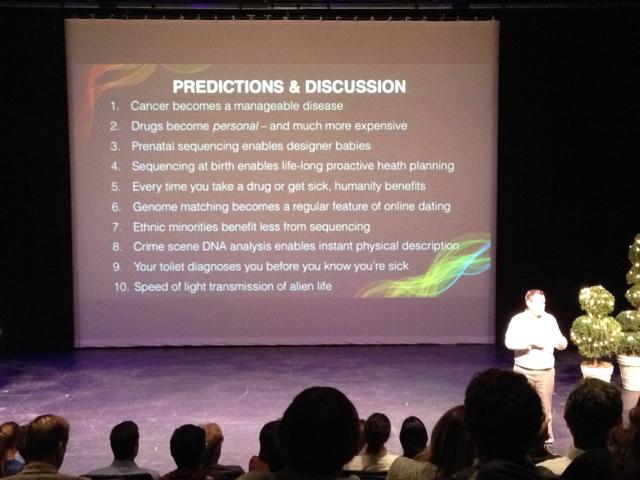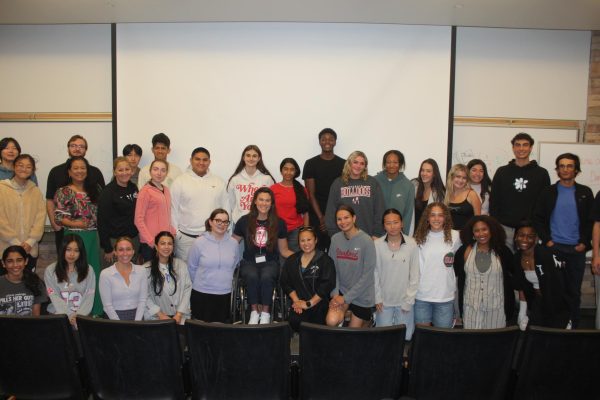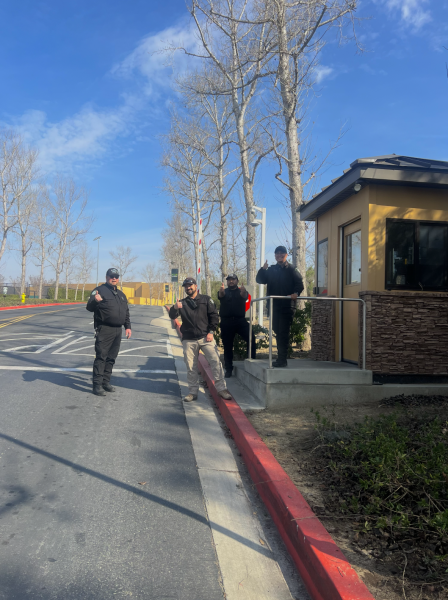The Future with DNA Sequencing, Science Lecture Series
Drs. McDaniel and Dickinson explain the unequal distribution of genome sequencing technology during a Sage Hill Science Lecture. March 18 2014. Photographer: Rebecca Lynskey.
Tuesday March 18 marked the year’s fourth and final the Science Lecture Series titled “DNA Sequencing: What are the implications?”
The talk, held in the Black Box Theatre, was led by Tim McDaniel, Ph.D, and Alex Dickinson, Ph.D., of ILLUMINA, a leading biotechnology company that provides gene sequencing technology. Previous speakers discussed the Physics of Wall Street, mechanical and aerospace engineering performance and enhancing drugs in the realm of sports.
Dickinson, the first speaker and a Sage Hill School parent, discussed the bourgeoning developments in genome sequencing in large part thanks to ILLUMINA. The rate at which the process occurs from start to finish has exponentially increased in speed. Where once genome sequencing required $10 million and several years, it now only takes 24 hours and $1,000 to accomplish.
“I was fascinated by the number of avenues of life genetics can impact,” senior Allie Fudge commented. “This is exactly why I am considering going into genetics research. There are possibilities that we can’t even fathom right now.”

McDaniel, the second speaker, provided a more narrative approach to DNA sequencing. When his mother was diagnosed with Saisery Syndrome, a rare cancer, McDaniel led her genome sequencing project and identified existing drugs that would ease her pain. Although his story ended with his mother’s death, McDaniel expressed his hope for the future in genome sequencing.
“It made it personal,” noted junior Brian Slaughter. “Everyone can relate to it some sort of way.”
“I thought it was interesting how it began with a scientific approach and ended with a real life example,” agreed senior Sarah Woodworth.
Yet the talk did not end on a sad note. The two scientists delivered their sometimes comical predictions for the future. These predictions included the use of DNA sequencing in crime scene investigation, online dating, identifying extraterrestrial life forms and everyday health diagnosis—with DNA sequencing technology in toilets.
“Your feces are a huge window,” said Dickinson.
Learn more about the human genome project here.







